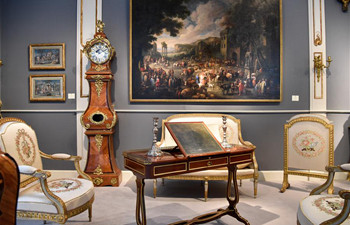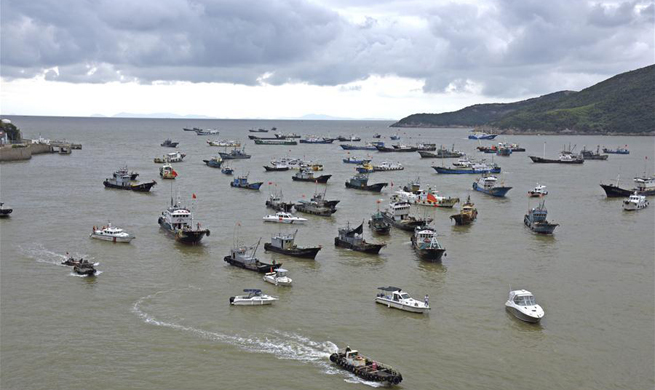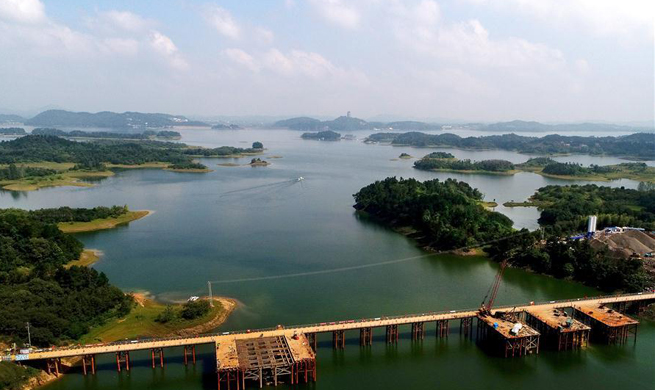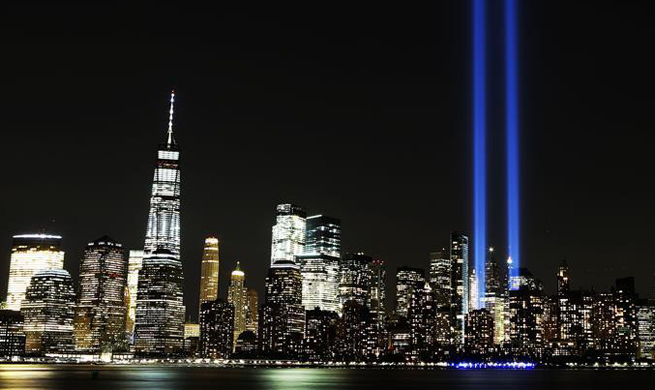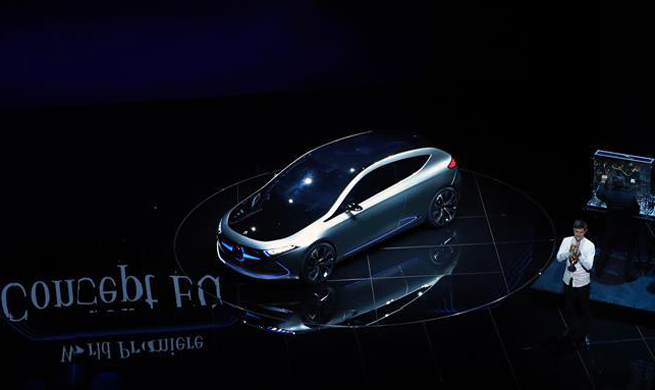by Alessandra Cardone
VENICE, Italy, Sept. 12 (Xinhua) -- With almost every street, bridge, historic building and canal bustling with tourists and gondolas, a locally traditional rowing boat, some Venetians finally started to feel enough of it.
The inflow of visitors to the northestern Italian city known for its layout in lagoon has been exponentially growing in the last 10 years to the current estimated at least 60,000 arrivals each day.
In particular for its old city, which boasted no more than 55,000 people in 2016 but is the most visited, the massive influx of tourists undoubtedly brought inconvenience to the local residents, among which the concerns for their city's future and its identity started growing.
As latest as in July, local citizens took to the streets to show their fears that the massive touristic inflow, coupled with an exodus of native people, would make Venice wane from its original characteristics.
The latest rally saw no more than 2,000 protesters, yet they represented feelings largely shared.
"I agree with them, because tourism has been constantly increasing, and residents have kept dropping in the last 20 years," Venetian architect Fabrizio Boscolo told Xinhua. "Thus, the city's economy is fully tourism-oriented, and its identity has been eroded."
Indeed, Venice's population has been in decline for decades -- from some 174,000 in 1951 to 104,000 in 1975, and 55,583 in 2015 -- according to the city's statistical office.
Many believe the mass tourism is contributing to this trend in many ways: pushing up rents and prices of basic goods, dominating local activities, and partly weakening artisanal traditions.
Overall, the large metropolitan city (including the belt around the lagoon city) registered over 34 million tourists in 2015, according to the latest report available from Venice's tourism department. Yet, it was Venice's historical center to receive over 65 percent of them.
"Our daily life has indeed become harder, for example in terms of local transports, which are overloaded, and other basic services," 74-year-old Alba, who was born in Venice and spent all of her life in the water city, complained to Xinhua.
"Our wonderful artisan workshops have disappeared from the center," she said.
The senior Venetian continued to complain about the lack of respect to the city among some tourists, saying "I see young tourists diving from our bridges, others taking bath in the fountains at night, or people eating pizza on the steps of San Marco square."
"This city is coping up to now, amazingly... yet, I wonder for how much longer," Alba said worryingly.
Similar worries are also expressed by residents of other Italian cities, such as Florence and Rome.
But the problems are more outstanding in Venice, which unlike its peers has a specific limit.
"Venice has no periphery, it is almost totally historical center. So, if you live here, you have no way out," Boscolo said.
Civil associations are active in the struggle. They warn that, as much as tourism is the major source of richness for Venice, few Venetians would argue against that, it's at the same time threatening its future, if no solutions are found to ease the burden.
"One of the biggest threats is the disappearance of Venice's citizens," group Venezia Autentica (Authentic Venice) wrote on its website, which encourages tourists to treat the city like "authentic Venetians."
"With them, (it is also disappearing) the mastery and the know-how that has kept Venice alive for thousands of years," warned the group.
A further source of concern is that, as new generations are forced out by the unaffordable costs of housing and living, those who remain are increasingly aging, the association warns.
Venetians are aware that other cities in Europe are thinking about putting a cap on arrivals, and Dubrovnik in Croatia has already implemented the measure this summer.
Venice is also on the move. The municipality has increased the number of civil servants reining in tourists, who behave incorrectly around the main public venues. Yet, three unmanageable factors were to be addressed in order to find a solution to sustainable development of tourism, local residents believe.
Firstly, tourists arriving and leaving in the same day -- as such not registered in any statistics. They could be estimated in some 20 millions per year, and would bring little benefit to the economy, environmental group Italia Nostra (Our Italy) reported in Sept. 2016.
Secondly, the surge of B&B in the historical center, which had been allowed in the 1990s when the city needed to broaden its reception capacity, and was now difficult to stop.
Thirdly, the passage of huge cruise ships through the Giudecca canal flowing into the San Marco basin.
"Sometimes, seven or eight ships arrive in one day, and each of them unloads several thousands people, who would all rush for San Marco square, and stay a few hours," Boscolo, the architect, explained.
"As a Venetian, looking at those ships is a strange feeling: it is like riding a bike inside your home... Sooner or later, you know something will go broken."









